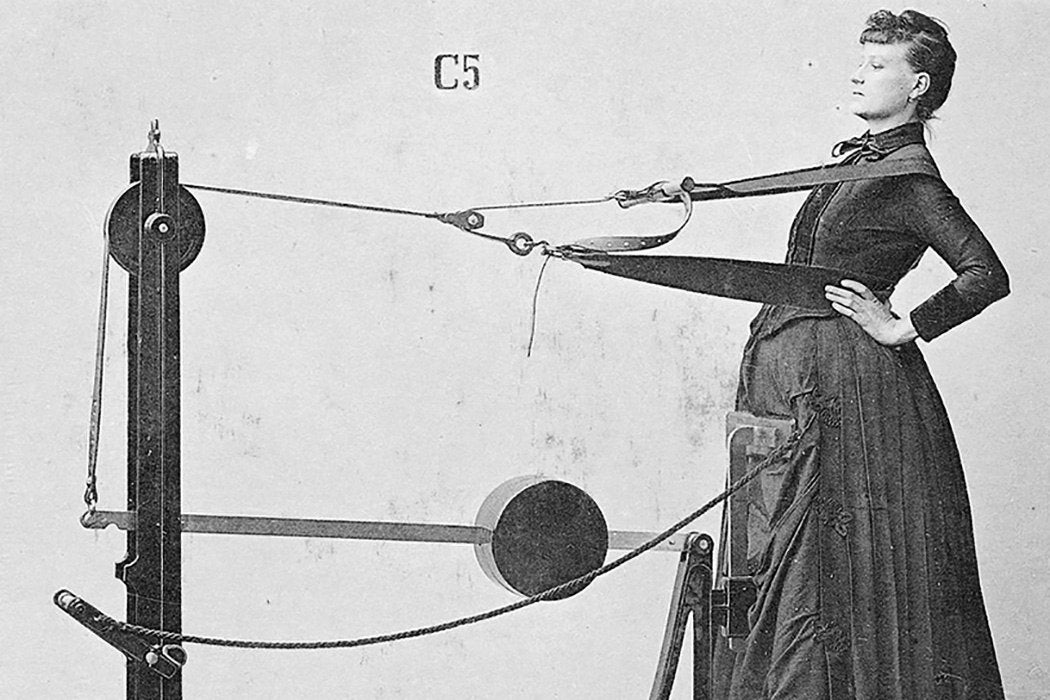Remember those weird vibrating belly belts? (They were called Battle Creek Health Builders, in case you’ve forgotten.) In decades past those were all the rage for weight loss, allegedly a ticket to a firm stomach without actually doing any exercise. The promise of these bizarre machines was oversold, and they soon fell out of favor. But maybe they were on to something after all. Something called Whole body vibration (WBV) is making a comeback as a substitute for exercise.
Serious consideration of this idea is so new (on this go-round anyway) that there is little research—the current study was done with mice. There are people, however, who are regularly exposed to vibration through work, e.g. using power tools. The vibrations stimulate tendons to contract muscles. And what is a workout, after all, if not forcing your muscles to contract. Work-related vibration is sort of like the isotonic exercises recommended for long-distance air travelers, but across the entire body and much more rapid. At the correct frequency, the vibrations can stimulate contractions a much faster rate than can be achieved consciously. Eventually muscle fatigue and exhaustion occur, a problem when working with power tools, but a desirable result for exercise. One downside is that tendon stress can occur, but this can occur with high intensity workouts as well.
While there is some reason for caution, on the whole the negative effects are temporary. Vibration impacts motor control and hand-eye coordination, which might be an issue for a helicopter pilot but not a huge downside for a workout. It’s not like most people will be building their IKEA dresser during their vibration treatment. Similarly, vibration can lead to blurred vision after a few minutes, but the condition clears up shortly after the vibration stops.
Slightly more ominously, there is some evidence linking vibration to lower back pain and injury, but regular sitting for extended periods has the same effect. Some people exposed to vibration experience nausea or upset stomach. The worst documented impact of vibration is a circulatory disorder of the hands that is associated with heavy vibrating tools such as chainsaws. This disorder is not, however, associated with WBV.
WBV therapy is mostly intended for people with pre-existing conditions that make regular exercise difficult. WBV is not going to do much for cardiovascular health, as it creates little change in heart rate. But muscle and bone health improved in the mice. Fractures are a risk for obese patients or others who cannot work muscles properly. Accordingly, if human trials are successful, WBV should really be considered a medical treatment and not the next exercise fad.







